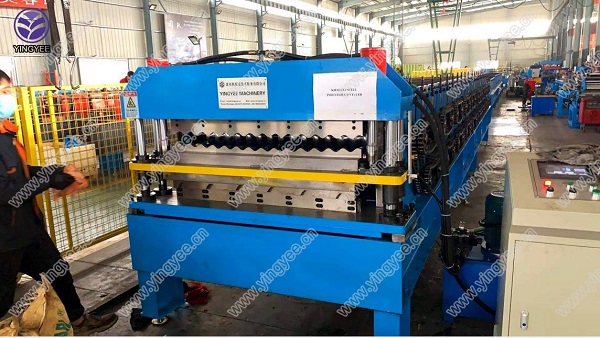
Understanding Down Pipe Roll Forming Machines
The demand for efficient and precise manufacturing processes in the construction and building industry has led to the development of specialized machinery designed to produce various components. Among these, down pipe roll forming machines play a crucial role. This article will delve into the significance, working mechanism, and benefits of down pipe roll forming machines in modern production.
What is a Down Pipe Roll Forming Machine?
A down pipe roll forming machine is a piece of equipment used to produce downpipes, which are essential in managing water drainage in buildings. These pipes are typically used to channel rainwater from gutters down to the ground or into drainage systems, preventing water accumulation and potential structural damage. The roll forming process allows for the continuous shaping of metal sheets into desired profiles that can be welded, cut, or further processed according to specific project requirements.
The Working Mechanism
The operation of a down pipe roll forming machine involves several key steps. Firstly, metal coils, usually made of materials like galvanized steel or aluminum, are fed into the machine. The roll forming machine consists of a series of rollers that progressively shape the metal sheet as it passes through them. Each roller is precisely crafted to bend the metal into specific angles and shapes, creating the desired profile without compromising the material's integrity.
The process begins with the uncoiling of the metal sheet, followed by leveling to ensure a smooth surface. The sheet is then guided into the roll forming section, where the rollers gradually form it into the shape of a downpipe. The forming section can be customized to produce different diameters and styles of downpipes, which can include round, square, or rectangular profiles.
Once the shaping process is complete, the downpipe lengths are cut to the required size using an automated cutting system. This system ensures high precision, allowing for minimal waste and maximum efficiency. Finally, the formed and cut downpipes can undergo additional processes such as perforation, punching, or coating for enhanced durability and aesthetic appeal.

Advantages of Using Down Pipe Roll Forming Machines
1. Efficiency and Speed One of the primary benefits of roll forming machines is their ability to produce large volumes of downpipes quickly. Automated processes minimize manual labor, allowing for continuous operation and efficient production workflows.
2. Customization Down pipe roll forming machines can be tailored to produce various downpipe profiles and sizes. This versatility makes them suitable for a wide range of applications, from residential buildings to large commercial projects.
3. Cost-Effectiveness While the initial investment for a roll forming machine may be significant, the long-term savings in labor costs and material waste make it a cost-effective solution for manufacturers. Automated processes lead to higher output rates, which contributes to lower production costs.
4. Quality and Strength Roll forming processes create consistent and uniform products with high structural integrity. The continuous bending technique reduces the risk of weak points or defects, ensuring that the final product meets industry standards for durability and performance.
5. Reduced Waste Since roll forming utilizes a continuous strip of metal, there is less waste compared to traditional cutting methods. This environmentally friendly aspect is increasingly important in today’s manufacturing landscape.
Conclusion
The down pipe roll forming machine exemplifies the advancements in manufacturing technology that cater to the needs of the construction industry. By offering high efficiency, customization, and quality, these machines not only enhance production capabilities but also contribute to more sustainable manufacturing practices. As the demand for effective drainage solutions continues to grow, so too will the importance of reliable and innovative machinery such as down pipe roll forming machines. Businesses looking to improve their production capabilities would do well to consider the significant advantages offered by this cutting-edge technology.